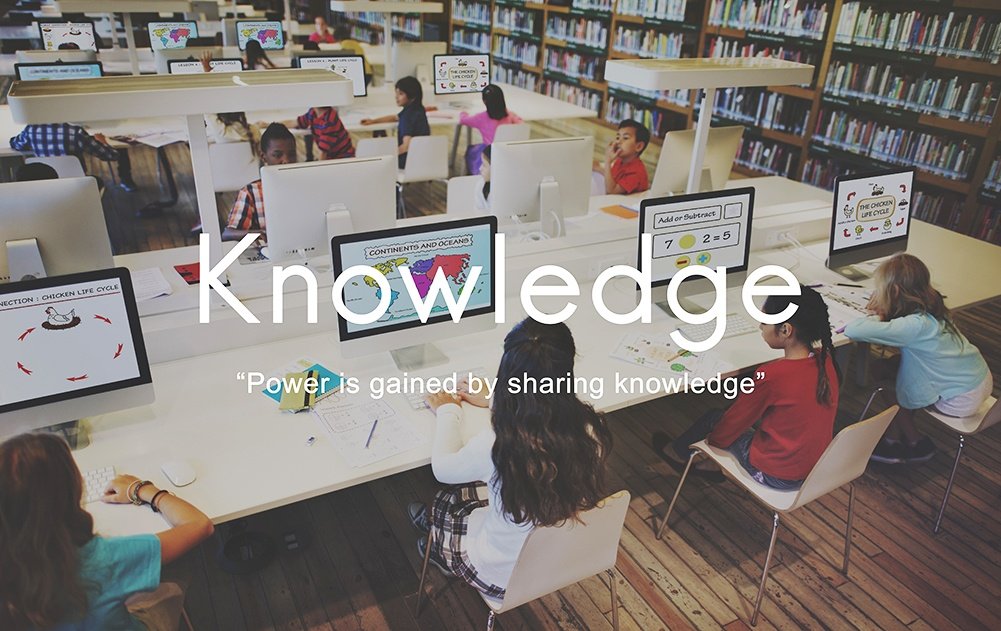
Sharing content through multimedia screens and interactive signage is one of the most effective ways to distribute information and educate an audience.
Smart organizations know that adding digital signage to a showroom, waiting room, office, or employee break room isn’t just for adding pizzazz to the walls. It’s about drastically improving their ability to share important information with customers, clients, and staff.
So, don’t write off digital signage as a marketing luxury.
Instead, start looking at it as an essential educational tool.
Why Digital Signage Is an Effective Teaching Tool
Many organizations only use verbal communication or text heavy, static resources to share information. And, these organizations are missing out.
If they were to add interactive and engaging visuals to their presentations, these organization would drastically improve the effectiveness of their communication. Using strong visuals allows organizations to connect more deeply with their audiences.
In a recent Spectrio blog post, Compelling Reasons Why Visual Marketing Matters More Than You Think, we looked at why visuals are so effective when it comes to communicating. The main points from that article explain why visuals also help with educating audiences.
- Visuals help people pay attention. Attention spans are small. We are easily distracted, and visuals hold onto our attention longer, making it a great tool for delivering important information.
- Visuals quickly transmit information to the brain. Our brains interpret images far faster than text (60,000 times faster), so visual training makes it easier for people to quickly understand.
- Visuals help people remember. Information delivered through a combination of visuals and lectures is easier to remember than information delivered through a lecture alone. A study found that three days after hearing a spoken lecture, people recalled 10-20% of the information. Three days after hearing a lecture with visuals, people recalled almost 65% of the information.
- Visuals increase the effectiveness of teaching. Teaching can be up to 400% more effective with the use of visuals. Stanford University’s Robert E. Horn explains that “visual language has the potential for increasing ‘human bandwidth’—the capacity to take in, comprehend, and more efficiently synthesize large amounts of new information.”
Engaging visual presentations don’t just add pizzaz. They add an essential educational element that helps people absorb information faster and retain it longer.
How to Use Digital Signage as an Educational Tool
Even if your organization doesn’t have ties to the education industry, it’s likely that you use education in your business more than you think. Here are a few ways you can use digital signage as an educational tool and improve the effectiveness of your messaging.
Educate Your Customers
Show how a product works. Directions or blurbs on a product box are not enough to explain how a product works. Product demo videos on the other hand, can quickly show a product’s features and benefits and educate customers on how to use it.
Explain why a service is necessary. Customers are hesitant to purchase services if they don’t fully understand why they need it. Digital signage videos allow you to educate your customers and give a detailed explanation of why the service is necessary and important.
Share what happens during a service. In addition to educating a customer on why they need a service, digital signage can also show what happens during a service. This helps weary customers get a look at what they are paying for and see the value of the service.
Educate Your Patients
Share educational resources. Health-care providers make a commitment to improving the health and well-being of their patients, and digital signage allows them to fulfill this mission. Using videos to share educational resources about how patients can improve their health allows healthcare providers to service their patients outside of treatment and appointments.
Explain procedures to patients. Educating patients about what to expect during their procedure or appointment can help alleviate patient stress and anxiety. Instead of explaining procedures through brochures, digital video educates in a more engaging way.
Teach patients about home health or rehab activities. Use interactive media to teach patients how to perform at-home health care activities, such as administering medicine or performing rehab exercises, will increase the likelihood that patients will remember how to do the tasks properly.
Educate Your Staff
Provide new staff orientation. Introductory programming delivered through a digital screen is an effective way to get all of your staff on the same page from day one.
Train (and retrain) procedures and processes. Educating new staff on the processes and procedural requirements of their job is easier when you use video tutorials and training. Using digital signage better trains employees and ensures a more consistent quality of their work. Plus, it can be used later as employees need refreshers on information.
Educate on new studies and trends. Job training usually doesn’t end after the first few weeks on the job. If continuing education is a part of the tasks of your staff, using digital signage as a teaching method will help them stay relevant on new trends, topics, and requirements in your industry.
These are just a few examples of how you can use digital signage as an educational tool. Each organization will have education and communication needs that are unique to their business or practice.
Take a few minutes to think about all of the ways that you educate your customers, clients, and staff, and then consider how much more effective that training would be through digital signage.
Or if you still can’t imagine how to use digital signage as an educational tool, use our free resources to further explore the topic. Visit our resource bank to find guides and infographics that explain even more benefits of adding digital signage to your communication plan.